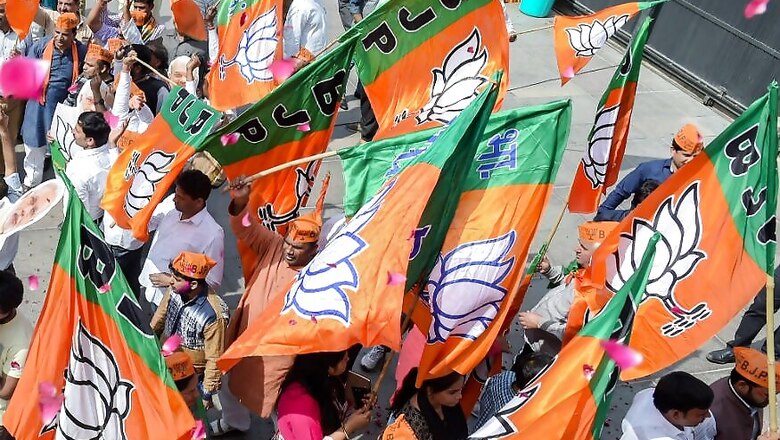
views
New Delhi: What’s in a phase? In a state as large and diverse as Uttar Pradesh, the sequencing of multi-phase electoral exercise does matter a lot.
The elections to the 80 Lok Sabha seats in UP will be held in seven phases. The election will travel from West to East; that is constituencies bordering National Capital Delhi will vote first. The last phase will be held mid-May in seats contiguous to Bihar.
Empirical evidence over the last 15 years suggests outcome — both in assembly and Lok Sabha polls in Uttar Pradesh — may also depend on (apart from other factors) whether the states votes from West to East or vice-versa.
In the run-up to the 2014 general election, a BJP functionary closely associated with the elections management was keeping his fingers crossed till the announcement of poll dates. He heaved a sigh of relief when the commission called for seven-phase polls in UP, with western districts polling in the first leg.
Polling in the last general elections travelled from West to East, culminating in the Poorvanchal region with two high-stakes battles in Varanasi (Narendra Modi) and Azamgarh (Mulayam Singh Yadav).
“All other factors remaining constant, it is important at times for a party in multi-phased polls to do well in the first couple of phases," the BJP functionary told News18. “Western UP, post the riots, was our stronghold. A good performance here helped us build momentum with each passing phase to outclass our opponents in areas where we have been traditionally weak,” he said.
The announcement of poll dates for the 2017 UP assembly elections also brought cheer to the BJP when the EC said polls to the state assembly would be held in seven phases and will begin from Ghaziabad bordering Delhi. The last phase was scheduled for Chandauli — the far-east end of the state.
Now contrast this with the 2012 state assembly polls. Once again, UP had a multi-cornered fight and multi-phased polls. But the electioneering that year started from the east and moved west in a clockwise direction — the areas where regional parties have traditionally done well.
With SP seemingly doing well, and with momentum on his side, Mulayam Singh Yadav picked up seats in western districts where he has no or little base vote and romped home in the Rohilkhand regions which polled last. Miffed with Yadav for joining hands with Kalyan Singh for a brief while, Muslims in pockets voted for the Congress in the first phase.
Maharajgunj near Gorakhpur, for instance, was won by the party after many years. The trend continued till the very last with Congress picking up almost two dozen seats from the state. Likewise, the first couple of phases in the upcoming polls could also be crucial in determining the trend of minority votes in parts which poll later.
The BSP, this time around, has put all its money on the Dalit-Muslim combination. Take for example Bijnor district abutting Uttarakhand in Western UP. Of the eight seats, two are reserved; and for the remaining six, the BSP has fielded Muslim candidates. The SP is not far behind, nominating five candidates from the minority community.
As the elections travel from west to east, Muslims’ voting pattern in the first couple of phases in places such as Bijnor, Saharanpur and Rohilkhand may set the trend. And once the polling is on, it is very difficult to reverse the momentum midway. Or the wind direction, it is in the air – ‘hawa’ - as they call it in UP. One may not see it, but can only smell it.
The BJP generally prefers the westerly. Easterly suits the Samajwadi Party. As for the BSP whose support base is spread even, the party performance is generally impervious to prevailing weather conditions.
But every election is a unique socio-political churning. The 2019 elections are different from 2014 in the sense that the BJP faces a higher index of opposition unity in UP. It is in power both at the Centre and the state. As such, it would be defending the incumbency of five years of the Modi government and two years of the Yogi government.




















Comments
0 comment